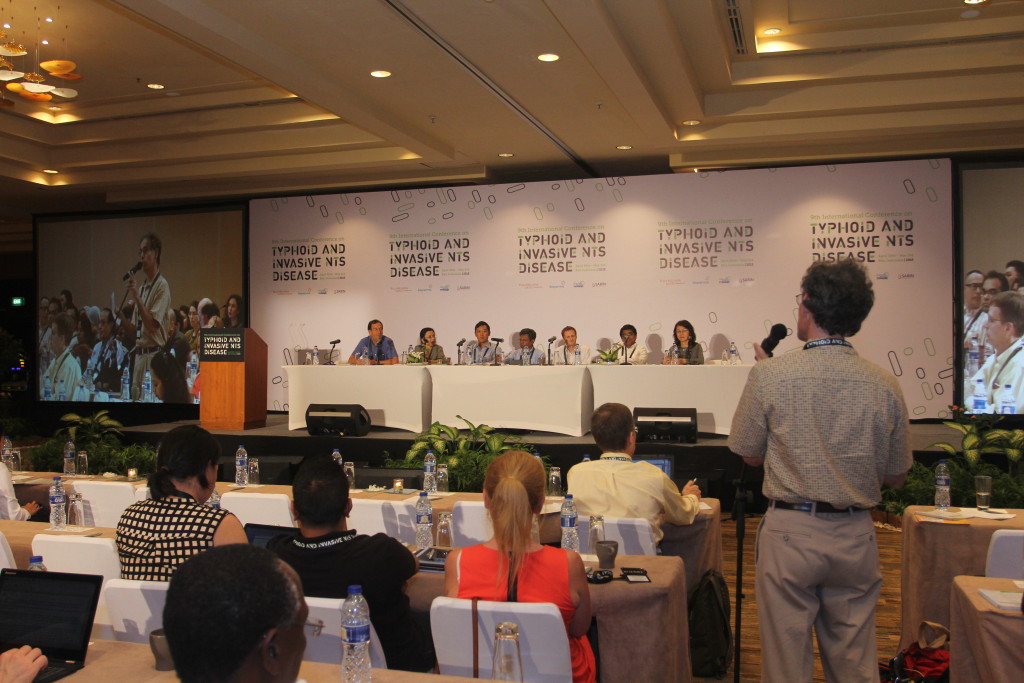Program
9th International Conference on Typhoid and Invasive NTS Disease
Presentations
*Some presentations have been excluded at the request of the presenter
May 1st
Surveillance for Enteric Fever in Asia Project
Kashmira Date, US Centers for Disease Control and Prevention
Namrata Prasad, University of Otago, New Zealand
Aaron Jenkins, Edith Cowan University, Australia
Bonita Effendi, Universitas Indonesia, Indonesia
Virginia Pitzer, Yale School of Public Health, United States
Melita Gordon, University of Liverpool, United Kingdom
Jean-Noël Telles, Fondation Mérieux, France
Typhoid fever in Bangladesh: from infection to protection
Firdausi Qadri, icddr,b, Bangladesh
High rates of enteric fever diagnosis and low burden of disease in rural Nepal
Jason Andrews, Stanford University, United States
Linking typhoid transmission to the water distribution system in Katmandu, Nepal
Stephen Baker, Oxford University Clinical Research Unit, Viet Nam
Impact of a water quality intervention on typhoid incidence in urban India
Ayse Ercumen, University of California Berkeley, United States
The current state of Salmonella research: successes, challenges, barriers, research gaps
Gordon Dougan, Wellcome Trust Sanger Institute, United Kingdom
May 2nd
Data from Nigeria: hospitalizations and complications
Stephan Obaro, The University of Nebraska Medical Center, United States
Epidemiological data from Africa: case fatality and association with drug resistance
Jan Jacobs, Institute of Tropical Medicine, Belgium
Data from Malawi: outbreak data and factors related to complications
Nicholas Feasey, Liverpool School of Tropical Medicine, United Kingdom
Cost of Illness Due to Typhoid Fever in Pemba, Zanzibar, East Africa
Arthorn Riewpaiboon, Mahidol University, Thailand
Palpasa Kansakar, WHO-Nepal, National Public Health Library, Nepal
Christopher Parry, London School of Hygiene and Tropical Medicine, United Kingdom
Arvinda Sooka, National Institute for Communicable Diseases, South Africa
HLA and resistance to enteric fever
Sarah Dunstan, The University of Melbourne, Australia
Immunity to invasive Salmonella infections: lessons from animal models and man
Pietro Mastroeni, University of Cambridge, United Kingdom
Salmonella Typhi host specificity: new insights from the study of Typhoid toxin
Jorge E. Galán, Yale University School of Medicine, United States
Understanding NTS transmission
Karen Keddy, National Institute for Communicable Diseases, South Africa
iNTS burden in sub-Saharan African children: an African view
Simon Kariuki, KEMRI-CDC, Kenya
Dissecting immune responses against iNTS
Tonney Nyirenda, Malawi-Liverpool-Wellcome Trust Clinical Research Programme, Malawi
Requirements for tackling NTS disease
Allan Saul, Vaccines Institute for Global Health, A GSK company, Italy
Corinne Thompson, Oxford University Clinical Research Unit, Viet Nam
Hazel Dobinson, Oxford Vaccine Group, Oxford University, United Kingdom
The current status of vaccine development for control of Salmonella Paratyphi A
Rodney Carbis, International Vaccine Institute, Republic of Korea
Ram Krishna Shrestha, Om Hospital and Research Center, Nepal
May 3rd
Typhoid vaccine Introduction in Nepal
YV Pradhan, Society of Public Health Physicians, Nepal (SOPHYN)
Typhoid vaccination in Sri Lanka
Dr. Paba Palihawadana, Ministry of Health, Sri Lanka
Krishna Mohan, Bharat Biotech International Limited, India
New Vaccine Introduction Decision Making: Principles, Practices, and Realities
Michael Friedman, World Health Organization, Indonesia
Vineeth Varanasi, Bharat Biotech International, Limited, India
Progress in the development of a Vi-DT conjugate vaccine
Erman Tritama, Bio Farma, Indonesia
Progress in the development of a Vi-CRM197 conjugate vaccine
Akshay Goel, Biological E, India



